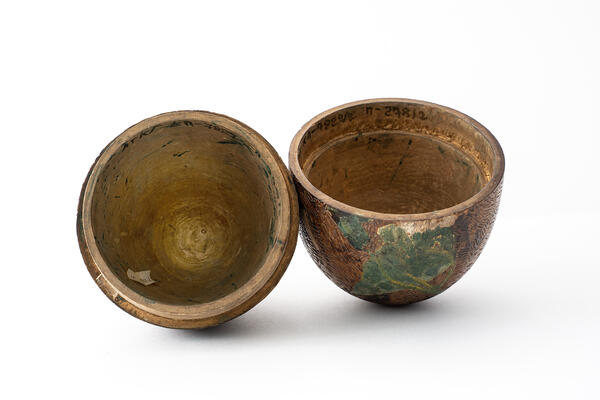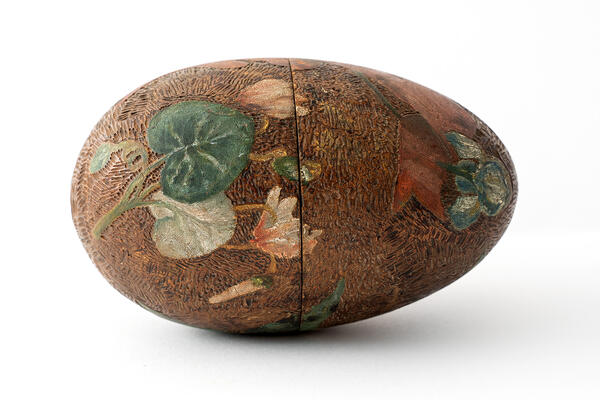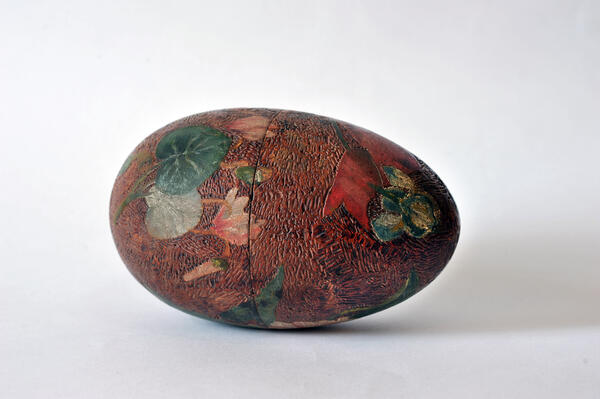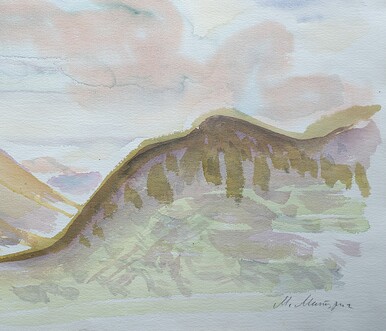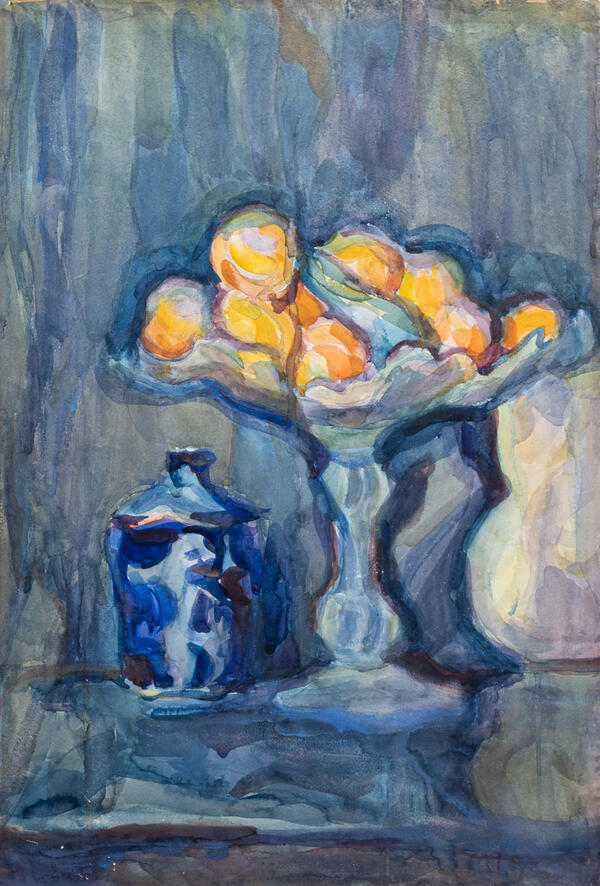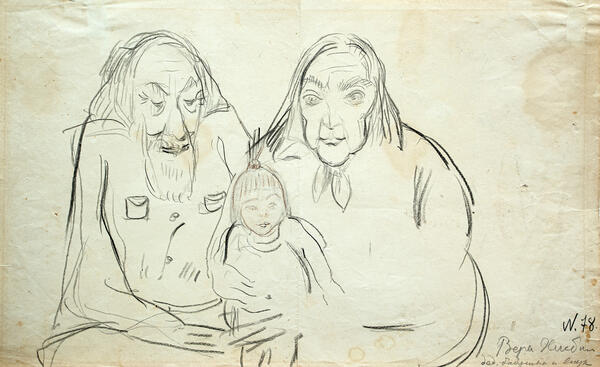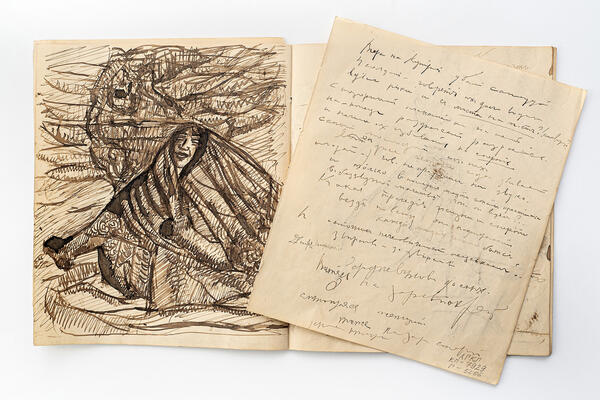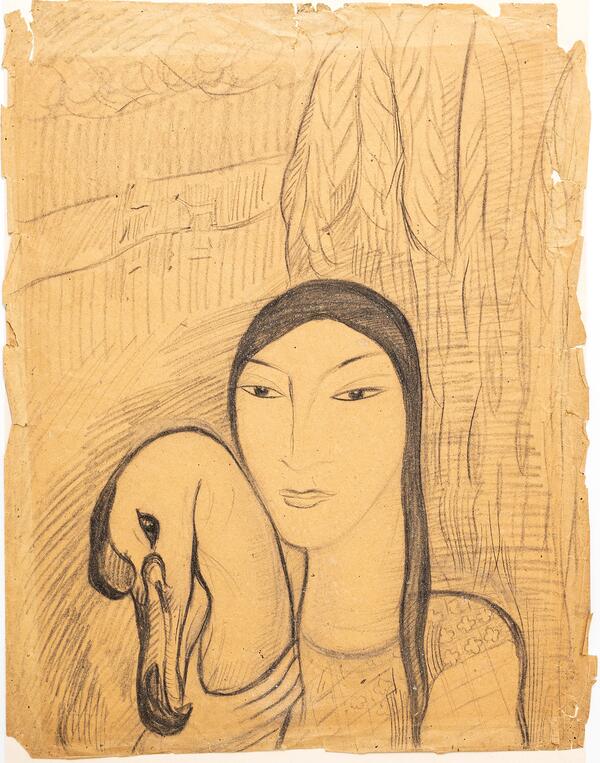The practice of gifting painted eggs (also called “krashenki” in Russian) for Easter was widespread even in pre-Petrine Russia. They were made at home or bought at street stalls in huge quantities. Friends and strangers, regardless of age, rank, gender and age, congratulated each other with Easter on the street, and up to 200 eggs could be received (or gifted) in a day.
At first, edible gifts were exchanged, but long-lasting Easter souvenirs gradually came into fashion. Eggs were made both by private vendors and at factories from wood, glass, papier-mâché, and even precious stones. In the 18th century, porcelain, crystal and enameled metal eggs were popular, while in the 19th — woven ones from beads or cloth, with a cardboard frame.
Wood, a publicly available material, was decorated with carvings, patterns, and gilded. However, the creation of such items required certain artistic skills, tools and patience.
The wooden egg from “The Khlebnikovs Collection” was made by Vera Vladimirovna Khlebnikova using several different techniques. The frame (“underwear”) was turned on a lathe; the pattern of dots covering the walls of the egg was made with a chisel. The egg was also decorated with paintings, carvings and pyrographic images.
It is not established when exactly the item was made, but it probably belongs to an early period of the artist’s work. The researchers came to this conclusion by comparing the style and technique with other early works of the artist, for example, four “floral” watercolors made by Vera at the age of 12–14, as well as separate images of flowers, twigs, and leaves. The drawing of the flower is also featured, among other things, on a letter that little Vera sent to her father from St. Petersburg.
The decorative refinement of the figurine is reminiscent of the Art Nouveau style. With the help of clear short slits on the wood, the artist skillfully recreated the movement of the water surface — thanks to this technique, the flowers that were not carved look more voluminous.
“The Khlebnikovs Collection” also includes other works by Vera Khlebnikova as a pyrography artist: narrative works, for example, “Murder”, portraits, and frames.

